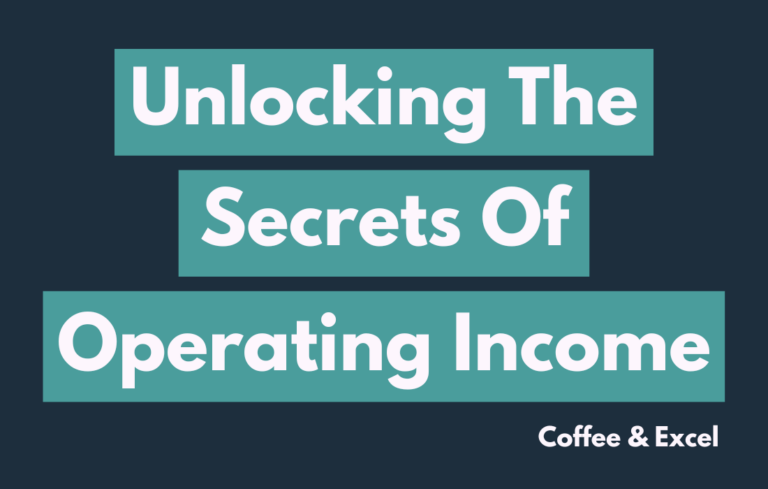Business Loan Refinancing: Your World of Financial Freedom Awaits:

Understanding Business Loan Refinancing
For those navigating the realm of small business financing, the concept of business loan refinancing can be a pivotal strategy for financial management and growth.
What is Refinancing?
Refinancing a business loan involves replacing an existing loan with a new one, typically under different terms. The primary goal is often to lower interest rates, improve cash flow, or adjust the repayment schedule to better suit the current needs and capabilities of the business. As Nerdwallet explains, this process not only provides potential savings over time but also can result in more favorable loan conditions for the borrower.
Refinancing can apply to various types of business debts, including but not limited to term loans, commercial real estate loans, and equipment loans. It can even consolidate multiple debts into a single loan, simplifying debt management (Clearview Federal Credit Union).
When to Consider Refinancing
Refinancing a loan is a decision that should be made after careful consideration of several factors, including the financial health of the business, current market interest rates, and the remaining term of the original loan. It may be time to consider refinancing when:
- Interest rates in the market have dropped, and there is an opportunity to secure a loan at a lower rate, potentially reducing the overall cost of borrowing (Clearview Federal Credit Union).
- The business’s financial situation has improved, potentially resulting in better loan terms and lower rates due to an enhanced credit profile.
- The need arises to extend the loan’s repayment term to free up cash flow for other operational expenses or investment opportunities.
- Consolidating multiple loans into one could streamline payments and possibly reduce costs.
- The business requires additional funds, and refinancing could provide a cash-out option.
However, business owners should be mindful of the costs associated with refinancing, such as origination fees, prepayment penalties, or closing costs, and weigh these against the potential benefits (Nerdwallet).
For those considering this financial move, resources like loan calculators can be valuable tools in assessing the potential benefits and costs of refinancing. Additionally, understanding different financing options, from SBA loans to merchant cash advances, can help business owners make an informed decision that aligns with their strategic financial goals.
Benefits of Refinancing a Loan
Refinancing a business loan offers several benefits that could enhance the financial stability and growth potential of a small business. It’s a strategic move that can lead to significant savings and a more manageable debt profile.
Lower Interest Rates
One of the primary advantages of refinancing is the potential to secure a lower interest rate. This could result in substantial savings over the life of the loan, particularly if the creditworthiness of the business has improved since the original loan was obtained. A lower interest rate can also accelerate debt payoff by reducing the amount of interest paid, freeing up funds for investment or other uses (Medium).
| Original Loan | Refinanced Loan |
|---|---|
| 8% Interest Rate | 6% Interest Rate |
| $5,000 Monthly Payment | $4,500 Monthly Payment |
| $300,000 Total Interest Paid | $270,000 Total Interest Paid |
Improved Cash Flow
Refinancing can lead to improved cash flow by reducing monthly payments. This is often achieved by extending the loan’s term or lowering the interest rate. Improved cash flow provides more liquidity for daily operations and can ease the strain on a business’s finances, making it easier to cover expenses without disrupting operations (Clearview Federal Credit Union).
Extended Repayment Terms
Extending the repayment term of a loan can provide a business with more time to repay the debt, subsequently reducing the monthly payment burden. This can be particularly beneficial for businesses that require additional time to pay off their loans while still making progress in debt reduction. However, it’s important to note that a longer term may result in more interest paid over the life of the loan (FasterCapital).
| Original Loan Term | New Loan Term |
|---|---|
| 10 years | 15 years |
| $5,000 Monthly Payment | $3,500 Monthly Payment |
| $600,000 Total Repaid | $630,000 Total Repaid |
Debt Consolidation
Another compelling benefit of refinancing is the ability to consolidate multiple business debts into a single loan with one lender and one interest rate. This simplification of debt management can help save money in the long term and streamline the repayment process. It can also potentially improve credit scores by reducing the credit utilization ratio and the number of outstanding loans (Medium).
By considering business loan refinancing, small business owners can take advantage of these benefits to strengthen their financial position. Before proceeding, it’s crucial to assess the current financial health of the business, compare interest rates in the market, and evaluate the remaining loan term to make an informed decision. Tools such as loan calculators can be invaluable in this process, helping to visualize the potential savings and costs associated with refinancing.
The Process of Refinancing
The journey to secure better terms on a business loan begins with a thorough refinancing process. This involves evaluating current loan terms, searching for new lenders, applying for refinancing, and assessing offers and terms. Each step is crucial for those seeking to improve their financial position through business loan refinancing.
Evaluating Current Loan Terms
Before considering refinancing, it’s necessary to closely review the existing loan conditions. This includes understanding the current interest rate, monthly payments, loan maturity, and any fees or penalties associated with the loan. By doing so, business owners can determine if refinancing offers a substantial benefit.
| Loan Aspect | Details to Consider |
|---|---|
| Interest Rate | Is it fixed or variable? How does it compare to current market rates? |
| Monthly Payments | Are they manageable? Could they be lower? |
| Maturity | How much time is left on the loan term? |
| Fees/Penalties | Are there prepayment penalties or other fees? |
Searching for New Lenders
After assessing the existing loan, the next step is to explore the market for potential lenders. This may include traditional banks, credit unions, online lenders, or alternative financing sources such as peer-to-peer business lending. Business owners should consider a variety of lending options, including sba loans guide, trade credit, and commercial real estate loans, to find the most favorable terms.
Applying for Refinancing
Once a prospective lender is identified, the next step is to initiate the application process. This typically involves submitting financial statements, tax returns, and other documentation to demonstrate the business’s financial health. Loan application process articles can provide guidance on what to expect and how to prepare. It is crucial to present the business in the best light to secure the most advantageous terms.
Assessing Offers and Terms
After applying, it’s time to evaluate the refinancing proposals. This includes comparing interest rates, repayment terms, and any associated fees or costs. One should carefully consider the long-term implications of these new terms, including how they will impact cash flow and the overall cost of the loan.
| Offer Component | Considerations |
|---|---|
| Interest Rate | Is it lower than the current rate? Is it fixed or variable? |
| Repayment Term | Is it longer or shorter than the current term? |
| Fees/Costs | Are there origination fees, closing costs, or prepayment penalties? |
Business owners must consider all factors, including the potential risks and costs highlighted in sections like Potential Risks and Costs and Factors to Consider Before Refinancing, to make an informed decision about refinancing. Tools such as loan calculators can be instrumental in this phase to help weigh the benefits against the costs.
Throughout this process, it is important to remember that refinancing can offer significant benefits, such as improved cash flow and lower interest rates, but it also comes with its own set of considerations and potential risks. By carefully navigating the process of refinancing, business owners can make a strategic decision that supports the growth and financial stability of their enterprise.
Potential Risks and Costs
While business loan refinancing can provide numerous benefits, such as lower interest rates and improved cash flow, it is not without potential risks and costs that business owners must consider. Understanding these risks is essential to make an informed decision about refinancing.
Higher Interest Rates
Refinancing a business loan might lead to higher interest rates than the original loan, especially if the market has changed or if the creditworthiness of the business has declined. This could result in increased monthly payments and a higher total cost over the life of the loan. According to Nerdwallet, securing a lower interest rate is a key reason to refinance, but if the new loan’s rate is higher, it could be detrimental to the business’s financial health.
Refinancing Fees
Lenders may charge various fees for refinancing a loan, including origination fees, application fees, and appraisal fees. These costs can add up and should be carefully weighed against the potential savings from refinancing. Nerdwallet provides insights into the types of fees that lenders may charge, which borrowers should review before proceeding with refinancing.
| Potential Fee | Description |
|---|---|
| Origination Fee | A charge for processing the new loan |
| Application Fee | A fee for applying for refinancing |
| Appraisal Fee | The cost of assessing the value of collateral |
Prepayment Penalties
Some loans come with prepayment penalties, which are fees charged by the lender if the loan is paid off before the end of the term. These penalties can make refinancing less attractive, as they can offset the financial benefits of securing a new loan with better terms. It’s crucial to review the loan agreements for any mention of prepayment penalties before deciding to refinance.
Long-Term Implications
Refinancing can have long-term implications for a business’s financial situation. While it may provide immediate relief or benefits, it’s important to consider the overall impact on the business’s financial commitments. A longer loan term, for example, could mean paying more in interest over time, even if the monthly payments are lower.
To navigate these potential risks and costs, business owners can use loan calculators to estimate the financial impact of refinancing. Additionally, it’s wise to consult financial experts and carefully assess the offers from new lenders to ensure that refinancing will indeed lead to a better financial position for the business.
Factors to Consider Before Refinancing
Refinancing a business loan can be a strategic move to enhance your business’s financial posture. But it’s not a decision to be taken lightly. Before diving into the world of business loan refinancing, there are several crucial factors to take into account. Evaluating these elements can help ensure that refinancing will serve your business’s best interests in the long run.
Financial Health of Your Business
The current financial health of your business is a determinant of whether refinancing is a viable option. Lenders will examine your revenue streams, profit margins, and expense management to assess the stability and growth potential of your business. It’s essential to have a solid financial foundation with a track record of profitability before considering refinancing. Regularly reviewing your loan agreements and financial statements will provide a clear picture of where your business stands.
Current Market Interest Rates
Interest rates fluctuate based on market conditions. Refinancing when rates are lower than when you initially secured your loan can save your business a substantial amount in interest payments over time. Keep an eye on the current market interest rates to determine the potential savings refinancing could offer.
Remaining Loan Term
The remaining term of your loan is another important factor. If you have a short time left to repay your existing loan, refinancing may not be as advantageous, particularly when considering closing costs and the potential extension of debt. However, if there’s a significant portion of the term remaining, refinancing could offer more benefits, such as lower monthly payments or a reduction in overall interest paid. Tools such as loan calculators can assist in evaluating these aspects.
Creditworthiness
Your creditworthiness plays a critical role in refinancing. A strong credit history and high credit score can unlock better terms and rates. Conversely, if your credit score has declined since you took out your original loan, refinancing might lead to higher rates. Before applying for refinancing, it’s prudent to check your credit reports and scores to understand your standing. If necessary, take steps to improve your credit before seeking new financing options.
When considering these factors, it’s also beneficial to explore various refinancing options and resources. Whether it’s sba loans, peer-to-peer lending, or commercial real estate loans, the right refinancing solution should align with the specific needs and circumstances of your business. Seeking expert guidance can also be invaluable in navigating the complexities of refinancing and making an informed decision.
Refinancing Options and Resources
For small business owners considering business loan refinancing, there are several options and resources available. The right choice will depend on the business’s financial situation, goals, and the available terms from lenders. Here are some ways to navigate through the refinancing landscape.
Comparing Accounts and Rates
Before making a decision, it is important to compare accounts and rates from various lenders to secure the best possible terms for your refinancing needs. Tools like BankMatch℠ allow business owners to find suitable banks quickly and conveniently (Bankrate). Additionally, loan calculators can be useful to estimate potential savings and costs when comparing new loan offers.
Finding the Right Bank
The right banking partner can make a significant difference when it comes to refinancing. It should offer competitive rates, helpful customer service, and resources tailored to small businesses. Bankrate provides guidance for comparing accounts and finding the right bank, which can include traditional banks, credit unions, and online lenders. When searching for a bank, consider their experience with small business loans, reputation, and the level of support they offer throughout the loan application process.
Using Equity for Refinancing
For businesses that have built up equity, it may be possible to use it for refinancing without taking on additional loans or incurring extra fees. This option can be particularly attractive for businesses that own valuable assets like commercial real estate (Medium). Consider the implications of using equity with options like commercial real estate loans and understand how it can affect your financial flexibility.
Expert Guidance and Tools
Navigating the refinancing process can be complex, but expert guidance and tools are available to simplify the journey. Utilizing resources like financial advisors, loan specialists, and comparison platforms can help in making informed decisions. Bankrate offers tools to compare trusted real estate agents and provides expert advice for buying and selling properties.
When considering refinancing, remember to weigh the potential benefits against any risks and costs. Evaluate your business’s financial health, current market interest rates, remaining loan term, and creditworthiness before moving forward. For further insights and stories from other business owners who have gone through the process, check out small business loan stories. With the right preparation and resources, refinancing can be a strategic move towards achieving financial freedom and stability for your business.





